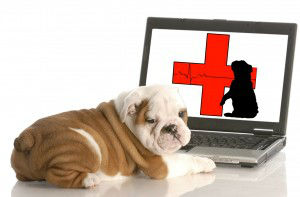
You probably have first aid kits in a few different locations. This may be especially true if you have children who just can’t resist touching that hot stove or picking up that piece of broken glass.
Fully stocked first aid kits in the home, car, play area, office and maybe even a mother’s purse or diaper bag can be the difference between a quick patch-up and an hour-long wait at the emergency room.
But while you may have these easy-access homemade kits available to tend to a burn, cut or scrape, are you prepared to treat similar ailments when Fido or Fifi are in distress?
In many ways, our pets’ needs in an emergency situation are very similar to our own. Yet unlike us, our dogs and cats can’t tell us what the problem is and in some cases our best intentions can only make matters worse. Check out this list of do’s and dont’s when your pets need emergency care.
- Do have a list of emergency contacts readily available, including your vet, an animal emergency hotline number, poison control center and and a nearby animal emergency hospital.
- Do wash out any wounds with water first and remove any debris with tweezers. Keep sterile gauze over a bleeding wound until you can reach a vet’s office.
- Don’t use hydrogen peroxide or alcohol on wounds, as these can damage delicate tissues. If the wound doesn’t require medical attention, an herbal ointment such as calendula ointment can prevent infection.
- Don’t attempt to induce vomiting unless instructed by your vet. Many chemicals can be corrosive and can damage the esophagus. If you suspect your pet swallowed a poisonous substance or object, call poison control or take them to the vet immediately.
- Don’t attempt to put your hands in a pet’s mouth if they are choking. Calm the animal as best you can and use tweezers to dislodge the object.
- Do wash an animal’s eyes with a gentle saline rinse in the instance of eye trauma.
- Don’t attempt to splint an injury alone. In the event of a broken bone, get the animal to the nearest veterinary hospital immediately. While you may have good intentions, improper splinting can do more harm than good.
- Don’t attempt to restrain a pet in the event of a seizure. You may inadvertently injure the animal and you can get bitten. Attempt to calm your pet with a gentle voice and only attempt to move them once the seizure is over.
Do have a pet first aid kit handy. A good kit should include:
- A gentle muzzle (remember, even the friendliest of animals may bite if in enough pain)
- Gauze
- Bandages (not the human kind with tape; pet stores will have bandages that won’t stick to animal hair)
- Blunt-end bandage scissors
- Saline eye wash
- Digital thermometer with lubricating ointment
- Tweezers
- Arnica and/or epsom salts to ease an injured pet’s muscles
- Antibacterial ointment, spray or cream such as calendula ointment or colloidal silver
- Chamomile tea or vitamin E cream to apply to dry or itchy spots
- Electrolyte beverages such as pedialyte (avoid any product that contains aspirin as this can be fatal to some animals)
 Remember, always seek veterinary care if your pet seems to be in distress, as they cannot tell us what their symptoms are. A first aid kit can help with a number of pet incidences until they can be properly assessed, and will help Fido and Fifi bounce back into action ASAP.
Remember, always seek veterinary care if your pet seems to be in distress, as they cannot tell us what their symptoms are. A first aid kit can help with a number of pet incidences until they can be properly assessed, and will help Fido and Fifi bounce back into action ASAP.
-The Alternative Daily
Souces:
https://www.avma.org/public/EmergencyCare/Pages/Basic-Pet-First-Aid-Procedures.aspx
http://www.treehugger.com/green-home/21-natural-home-remedies-pets.html
http://petsynergy.com/the-holistic-first-aid-kit

